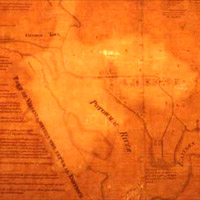 |

1791年華盛頓區的計畫,班尼卡為我們首都進行丈量工作。

|
 |
|
 |
數學家和天文學家,班哲明‧班尼卡出生,1731年11月9日
1752年,班尼卡的注意力,完全被一個木頭做成的時鐘所吸引
。這是美洲第一個由此方式做成的時鐘,在長達十年的時間裡都可以精準地報時。20年之後,,他成功的預測
到1789年的日蝕
現象,反駁了那些知名天文和數學家的推論。他的能力震撼了許多人,包括湯瑪斯傑弗遜,邀請他成立團隊為華盛頓區丈量,也就是今日我們的首府所在地。
閒暇之時,班尼卡撰寫有關賓州、德拉瓦、馬裡蘭和維吉尼亞的農民曆及星象曆書。農民曆包含醫藥和治療的知識、列出班尼卡自行計算河流、潮汐的資訊、和日月蝕的時間。1791到1802年,他每年出版一本曆書。
In 1752, Banneker attracted attention by building a clock entirely out of wood. The first ever built in America, it kept precise time for decades. Twenty years later, Banneker again caused a stir, when he successfully forecast a 1789 solar eclipse. His correct prediction contradicted those of better-known mathematicians and astronomers. Banneker's abilities impressed many people, including Thomas Jefferson, who recommended him for the surveying team that laid out Washington, D.C., making it the monumental capital it is today.
In his free time, Banneker wrote the Pennsylvania, Delaware, Maryland, and Virginia Almanac and Ephemeris. The almanac included information on medicines and medical treatment, and listed tides, astronomical information, and eclipses calculated by Banneker himself. He published the journal annually from 1791 to 1802.

 2/3 頁
2/3 頁

|





